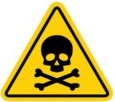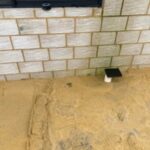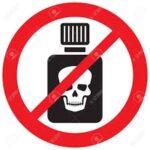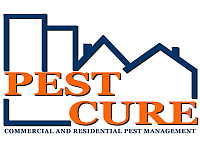
For many years, there has been a lack of understanding by builders and new homeowners surrounding pre-construction termite protection in Western Australia. This creates great risk and uncertainties.
Most new home builds rely on basic chemical sprays for their termite management even though:
 Traditional termite treatments are poisons. The most common chemicals used are Bifenthrin the active ingredient in Biflex and Fipronil which is the active in Termidor. Both of these are on the poison schedule.
Traditional termite treatments are poisons. The most common chemicals used are Bifenthrin the active ingredient in Biflex and Fipronil which is the active in Termidor. Both of these are on the poison schedule.
- Under slab sprays gives very little long-term protection. The average house would need approximately 1000 litres of diluted chemical under the slab. The Australian Standard of 5 litres per sqm is rarely achieved. Many pest companies in this area are under resourced and short cuts are too easy to take.
- Basic chemical treatments starts to biodegrade within 18 months. You cannot re-treat under the slab, so after a few years your house is unprotected.
- If the termite treatment is disturbed during the build, it requires retreatment (as per Australian Standards). This is rarely done, as another call out charge would apply and homes are therefore not fully protected.
Most new builds have a termite perimeter spray.
- For a perimeter spray to be warranted the treated area should not be disturbed. If this happens, the homeowner will not be covered by warranty and will require re-treatment at their own cost. This is often due to remedial plumbing works, leveling for paving and garden reticulation installs.
- Treated zones need to be replaced over time. Perimeter treatments typically need to be reapplied after 5 years.
- Perimeter treatments are applied by digging a narrow trench along the side the footing, flooding the trench with chemical and then refilling and soaking the soil as it is back filled.
- Where the building is built on sandy soil as is found around most of Perth the volume of treatment used should be increased to accommodate the faster drainage rate. Where lower volumes are used the required concentration of termaticide is not met as the liquid drains away before enough of the chemical can bind to the sand particles around the footings.
- Where the building is built on top of clay soils (as found in the Perth hills and beyond) the trench should be refilled with more loamy soils which bind better to the termaticide. However, this is rarely done and therefore the treatment is not as effective.
- For some unknown reason many builders in Perth place weep holes in the first course of bricks. These are typically covered in sand and have paving placed on top. This provides entry points for concealed subterranean termite entry into the wall cavity and voids any termite management warranty.

Note: When weep holes are covered by sand and then pavers placed on top, the termite management warranty is void.
Termicoat has the solution to these problems!
Termicoat® Is non-poisonous.
The active ingredient is Boron which is not on the poison schedule.
The Termicoat management system will eliminate warranty issues.
Termicoat® is locked in for life to the substrate concrete, mortar, bricks, and timber.
Termicoat is not broken down by the soil microbes over time and therefore needs no re-treatment.
Termicoat gives you a life of the build warranty when applied by a licensed registered applicator.
The system is easy to apply, does not interfere with the brick laying process, cannot be blown away or damaged by other trades.
Can be used to protect uneven and difficult to reach places and can be applied to all building substrates. Termicoat will soak around complicated pipe penetrations and makes treating nests a breeze.
Termicoat has been registered and licensed with the AVPMA as a termaticide product.
Termicoat is Code marked and certified as an approved and tested termite management system.
